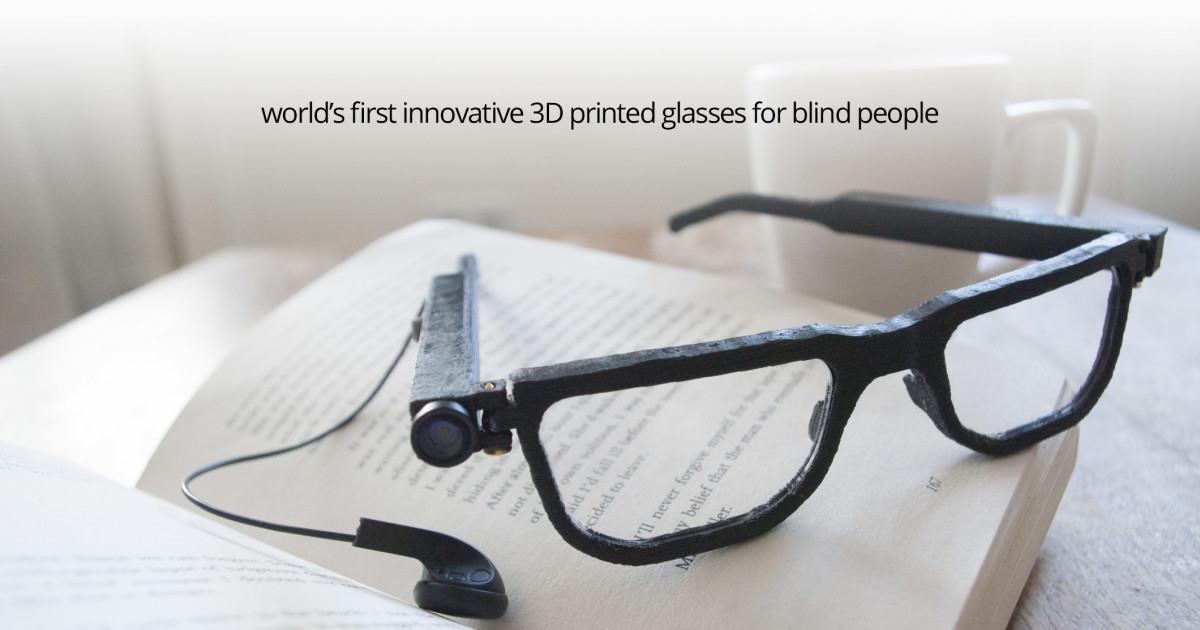How Smart Glasses for the Visually Impaired Are Revolutionizing Daily Life
How Smart Glasses for the Visually Impaired Are Revolutionizing Daily Life
Blog Article
Discover Advanced Assistive Instruments for Individuals With Visual Problems
The landscape of assistive modern technology for individuals with aesthetic problems is developing rapidly, providing a range of cutting-edge tools that boost freedom and interaction. From wise glasses that seamlessly combine visual input with acoustic support to sophisticated navigating applications that redefine spatial understanding, these tools are improving possibilities.
Smart Glasses Innovations
Smart glasses represent a significant improvement in assistive technology for people with visual impairments. Outfitted with sensing units and cameras, clever glasses can catch real-time visual details, which is then refined and shared to the customer with audio comments or haptic sensations.
Moreover, improvements in fabricated knowledge have further improved the capacities of wise glasses. Artificial intelligence formulas can recognize faces, checked out message, and determine things, making them important tools for everyday jobs. Users can get auditory hints that supply context about their atmosphere, cultivating independence and self-confidence.
In addition, the ergonomic design and lightweight nature of many smart glasses make them appropriate for long term use, making sure convenience while enhancing performance. As these gadgets proceed to evolve, they hold the prospective to change the method people with aesthetic problems experience their lives, connecting the void in between availability and technology. The ongoing r & d in this area promise to increase the opportunities for wise glasses, making them an important element of contemporary assistive gadgets.
Navigating Apps and Equipment
Various navigation apps and tools have become crucial sources for people with aesthetic problems, considerably enhancing their capacity to traverse unknown atmospheres. These technologies take advantage of GPS performance, audio cues, and real-time information to supply customers with exact navigating help.
One popular example is the Aira application, which attaches individuals to skilled agents who can offer aesthetic summaries of environments and navigating support via a live video feed. This service improves the customer's spatial recognition and confidence while browsing. An additional remarkable tool is Seeing Eye GPS, which uses voice-guided navigation and sights, enabling individuals to access vital information about their environments.

As modern technology proceeds to advance, the development of a lot more innovative navigating tools assures to more equip individuals with aesthetic disabilities, helping with smooth wheelchair and integration into varied atmospheres. Such advancements contribute in advertising a more inclusive society.
Braille Technology Developments
In the last few years, developments in Braille modern technology have actually dramatically changed exactly how people with aesthetic disabilities accessibility information and involve with the world around them. The growth of portable Braille displays has actually reinvented reading by allowing individuals to attach wirelessly to computer systems, mobile phones, and tablets. These tools transform message right into Braille in real-time, enabling seamless interaction with digital material.
Moreover, cutting-edge Braille printers have emerged, boosting the manufacturing of responsive products. Modern embossers are faster and a lot more effective, enabling for the quick development of Braille papers and instructional materials. This performance lowers the moment and cost related to creating Braille sources, making them extra available to institutions and companies.
In addition, the combination of Braille with other innovations, such as man-made knowledge and device learning, has actually opened brand-new methods for customized understanding experiences. Voice recognition and synthesis innovations can enhance Braille, providing a comprehensive review method to details dissemination.
As the need for comprehensive education and work environment environments grows, these technical improvements play a vital function in equipping individuals with visual problems, ensuring they have equal access to details and possibilities in various aspects of life.
Wearable Gadgets for Independence
A growing array of wearable devices is boosting independence for people with visual impairments, supplying cutting-edge options that boost navigation and day-to-day living. Braille displays and notetakers. These gadgets utilize sophisticated modern technologies to give real-time responses and support, advertising freedom in various environments

Wearable modern technology additionally includes smartwatches that can be configured with access attributes, allowing users to receive notifications, track their locations, or even call for assistance with the touch of a switch. site link Furthermore, some devices integrate fabricated knowledge to examine the environment, offering sound descriptions of close-by items or individuals.
Voice-Activated Assistive Solutions
Leveraging voice-activated assistive services has actually transformed the landscape of assistance for people with aesthetic problems, providing hands-free interaction and access to a range of tasks. These modern technologies use natural language handling and expert system to make it possible for individuals to perform day-to-day activities with basic voice commands.

In addition, recent innovations in voice acknowledgment precision have actually boosted the user experience considerably, accommodating vision therapy varied accents and speech patterns. This inclusivity makes sure that more individuals can gain from these modern technologies, fostering a higher feeling of freedom.
Conclusion
Finally, the growth of innovative assistive devices significantly improves the independence and lifestyle for people with visual impairments. Developments such as wise glasses, navigating apps, Braille modern technology, wearable devices, and voice-activated remedies collectively cultivate a more inclusive environment. These technologies empower users to browse their environments with self-confidence and involve more fully with the globe, ultimately advertising better ease of access and equal possibilities for individuals facing visual difficulties.
The landscape of assistive technology for people with visual impairments is evolving rapidly, providing an array of innovative tools that enhance freedom and interaction.Smart glasses represent a significant development in assistive innovation for individuals with aesthetic impairments. As these tools proceed to progress, they hold the prospective to transform the means individuals with aesthetic impairments experience their day-to-day lives, linking the space between accessibility and modern technology.In recent years, advancements in Braille modern technology have dramatically changed just how individuals with visual problems accessibility info and engage with the world around them. These technologies encourage individuals to browse their surroundings with confidence and engage more fully with the globe, inevitably advertising greater availability and equal chances for individuals dealing with visual challenges.
Report this page